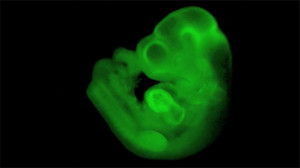By Sanne van den Tol
UCR Class of 2016
Stem cell research is one of the hottest controversial topics on multiple moral and legal counts, especially when they are acquired from embryos. Until now, that is. Young stem-cell biologist Haruko Obokata may have found a relatively easy, and less morally objectionable, way of converting mature cells into stem cells, simply by putting the mature cells under stress.
multiple moral and legal counts, especially when they are acquired from embryos. Until now, that is. Young stem-cell biologist Haruko Obokata may have found a relatively easy, and less morally objectionable, way of converting mature cells into stem cells, simply by putting the mature cells under stress.
Obokata found that whilst culturing cells, some would shrink to the size of stem cells after being squeezed through a microscopic tube, which puts physical pressure on the cells. She started experimenting and found that “three stressors — a bacterial toxin that perforates the cell membrane, exposure to low pH, [an acidic pH,] and physical squeezing — were each able to coax the cells to show markers of pluripotency”, said Obokata. Stated simply, this is the ability of cells to develop into certain, different cell types.
After demonstrating that stress could convert mature cells into supposed pluripotent cells, proof was needed to show that these cells were really pluripotent, proof that could be found by introducing fluorescently tagged cells into a mouse embryo, which could be seen in every tissue of the mouse, if the cells were indeed truly pluripotent. However, this only worked for fully differentiated, or specialized, cells from newborn mice, and not those of adult mice. Nonetheless, the cells turned out to be pluripotent and the research was continued. This was necessary, as Obokata was criticized by skeptics who claimed she could not prove she actually converted mature cells into pluripotent cells, nor that these cells were not originally pluripotent. As a result, she and her team not only converted white blood T cells, which show a particular gene arrangement when mature, to pluripotent cells, but caught it on video as well.
The knowledge of pluripotent cells of mature mammalian cells is not exactly a world-shocking discovery. As far back as 2006 researchers have been investigating the technique to turn adult cells into pluripotent stem cells, or iPS, by converting specific genes. However, this process takes weeks and has a very low percentage of conversion rate, only about 1%. The cells of Obokata on the other hand, had a 25% survival rate after being stressed, and about a 30% conversion to pluripotent cells rate. Another facet of her research that would appear to suggest the technique she used was more fruitful than the iPS technique has been so far, is the ability to not only convert mature white blood cells, but also others such as brain, skin and liver cells.
Still, this research is very young and therefore the outcome of further study may be contrary to what has been discovered thus far. There are many factors that could affect the results of the research, so the discoveries need to withstand the test of scrutiny before it can be fully relied upon. So far the technique has only been used on young mice cells in one research lab. To be truly proven and successful, the research must deal with real outcomes, be reproduced by other labs, with similar results, and be useful to humans. Ultimately, the most obvious indicator of success will be if it works on human (adult) cells. Despite the reservations stated, this research seems promising and will likely prove useful in stem cell research either way.
Sanne van den Tol, class of 2016, is a Science major from Halsteren, The Netherlands.
